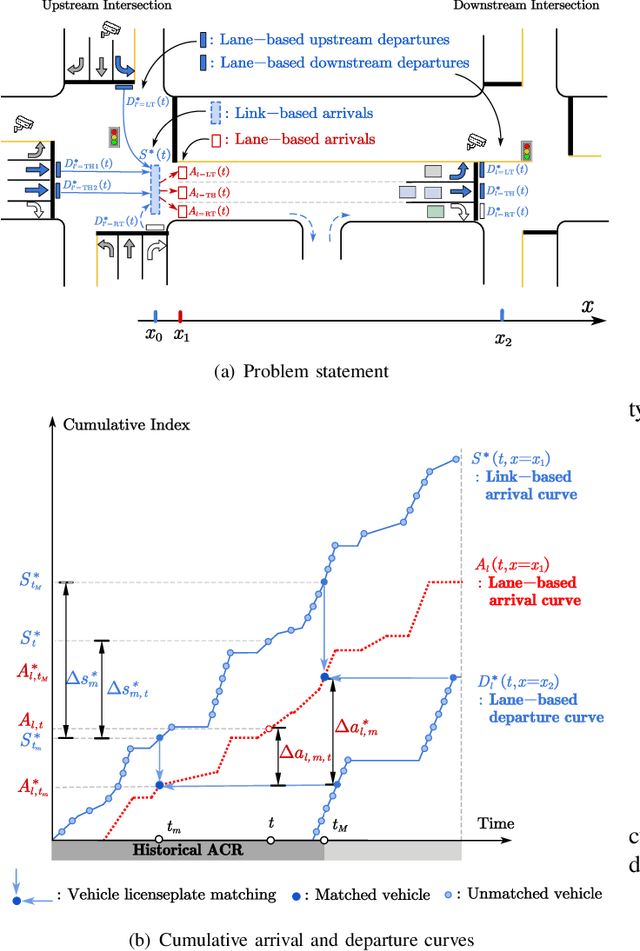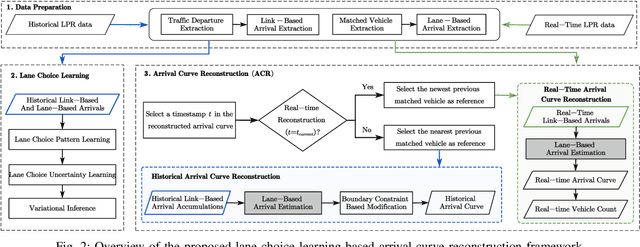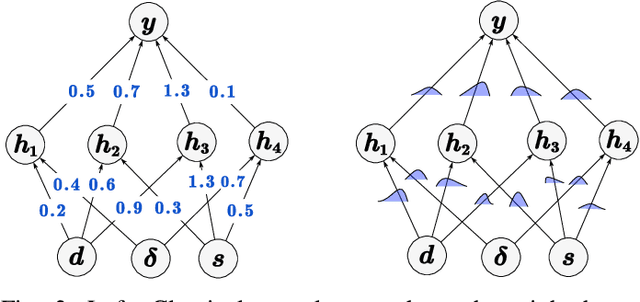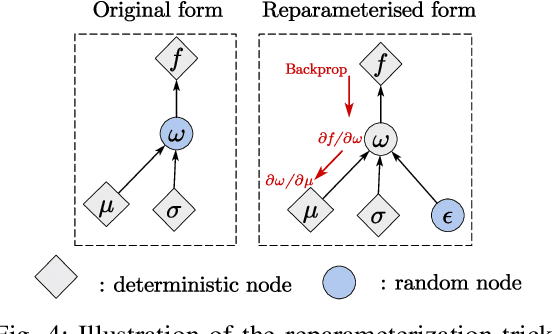License Plate Recognition
License-plate recognition is the process of identifying and reading license plates from images or videos.
Papers and Code
PatrolVision: Automated License Plate Recognition in the wild
Apr 15, 2025Adoption of AI driven techniques in public services remains low due to challenges related to accuracy and speed of information at population scale. Computer vision techniques for traffic monitoring have not gained much popularity despite their relative strength in areas such as autonomous driving. Despite large number of academic methods for Automatic License Plate Recognition (ALPR) systems, very few provide an end to end solution for patrolling in the city. This paper presents a novel prototype for a low power GPU based patrolling system to be deployed in an urban environment on surveillance vehicles for automated vehicle detection, recognition and tracking. In this work, we propose a complete ALPR system for Singapore license plates having both single and double line creating our own YOLO based network. We focus on unconstrained capture scenarios as would be the case in real world application, where the license plate (LP) might be considerably distorted due to oblique views. In this work, we first detect the license plate from the full image using RFB-Net and rectify multiple distorted license plates in a single image. After that, the detected license plate image is fed to our network for character recognition. We evaluate the performance of our proposed system on a newly built dataset covering more than 16,000 images. The system was able to correctly detect license plates with 86\% precision and recognize characters of a license plate in 67\% of the test set, and 89\% accuracy with one incorrect character (partial match). We also test latency of our system and achieve 64FPS on Tesla P4 GPU
A Lightweight Multi-Module Fusion Approach for Korean Character Recognition
Apr 08, 2025Optical Character Recognition (OCR) is essential in applications such as document processing, license plate recognition, and intelligent surveillance. However, existing OCR models often underperform in real-world scenarios due to irregular text layouts, poor image quality, character variability, and high computational costs. This paper introduces SDA-Net (Stroke-Sensitive Attention and Dynamic Context Encoding Network), a lightweight and efficient architecture designed for robust single-character recognition. SDA-Net incorporates: (1) a Dual Attention Mechanism to enhance stroke-level and spatial feature extraction; (2) a Dynamic Context Encoding module that adaptively refines semantic information using a learnable gating mechanism; (3) a U-Net-inspired Feature Fusion Strategy for combining low-level and high-level features; and (4) a highly optimized lightweight backbone that reduces memory and computational demands. Experimental results show that SDA-Net achieves state-of-the-art accuracy on challenging OCR benchmarks, with significantly faster inference, making it well-suited for deployment in real-time and edge-based OCR systems.
Efficient License Plate Recognition in Videos Using Visual Rhythm and Accumulative Line Analysis
Jan 08, 2025



Video-based Automatic License Plate Recognition (ALPR) involves extracting vehicle license plate text information from video captures. Traditional systems typically rely heavily on high-end computing resources and utilize multiple frames to recognize license plates, leading to increased computational overhead. In this paper, we propose two methods capable of efficiently extracting exactly one frame per vehicle and recognizing its license plate characters from this single image, thus significantly reducing computational demands. The first method uses Visual Rhythm (VR) to generate time-spatial images from videos, while the second employs Accumulative Line Analysis (ALA), a novel algorithm based on single-line video processing for real-time operation. Both methods leverage YOLO for license plate detection within the frame and a Convolutional Neural Network (CNN) for Optical Character Recognition (OCR) to extract textual information. Experiments on real videos demonstrate that the proposed methods achieve results comparable to traditional frame-by-frame approaches, with processing speeds three times faster.
Efficient Video-Based ALPR System Using YOLO and Visual Rhythm
Jan 08, 2025

Automatic License Plate Recognition (ALPR) involves extracting vehicle license plate information from image or a video capture. These systems have gained popularity due to the wide availability of low-cost surveillance cameras and advances in Deep Learning. Typically, video-based ALPR systems rely on multiple frames to detect the vehicle and recognize the license plates. Therefore, we propose a system capable of extracting exactly one frame per vehicle and recognizing its license plate characters from this singular image using an Optical Character Recognition (OCR) model. Early experiments show that this methodology is viable.
Embedding Similarity Guided License Plate Super Resolution
Jan 08, 2025Super-resolution (SR) techniques play a pivotal role in enhancing the quality of low-resolution images, particularly for applications such as security and surveillance, where accurate license plate recognition is crucial. This study proposes a novel framework that combines pixel-based loss with embedding similarity learning to address the unique challenges of license plate super-resolution (LPSR). The introduced pixel and embedding consistency loss (PECL) integrates a Siamese network and applies contrastive loss to force embedding similarities to improve perceptual and structural fidelity. By effectively balancing pixel-wise accuracy with embedding-level consistency, the framework achieves superior alignment of fine-grained features between high-resolution (HR) and super-resolved (SR) license plates. Extensive experiments on the CCPD dataset validate the efficacy of the proposed framework, demonstrating consistent improvements over state-of-the-art methods in terms of PSNR_RGB, PSNR_Y and optical character recognition (OCR) accuracy. These results highlight the potential of embedding similarity learning to advance both perceptual quality and task-specific performance in extreme super-resolution scenarios.
License Plate Images Generation with Diffusion Models
Jan 06, 2025Despite the evident practical importance of license plate recognition (LPR), corresponding research is limited by the volume of publicly available datasets due to privacy regulations such as the General Data Protection Regulation (GDPR). To address this challenge, synthetic data generation has emerged as a promising approach. In this paper, we propose to synthesize realistic license plates (LPs) using diffusion models, inspired by recent advances in image and video generation. In our experiments a diffusion model was successfully trained on a Ukrainian LP dataset, and 1000 synthetic images were generated for detailed analysis. Through manual classification and annotation of the generated images, we performed a thorough study of the model output, such as success rate, character distributions, and type of failures. Our contributions include experimental validation of the efficacy of diffusion models for LP synthesis, along with insights into the characteristics of the generated data. Furthermore, we have prepared a synthetic dataset consisting of 10,000 LP images, publicly available at https://zenodo.org/doi/10.5281/zenodo.13342102. Conducted experiments empirically confirm the usefulness of synthetic data for the LPR task. Despite the initial performance gap between the model trained with real and synthetic data, the expansion of the training data set with pseudolabeled synthetic data leads to an improvement in LPR accuracy by 3% compared to baseline.
License Plate Detection and Character Recognition Using Deep Learning and Font Evaluation
Dec 17, 2024License plate detection (LPD) is essential for traffic management, vehicle tracking, and law enforcement but faces challenges like variable lighting and diverse font types, impacting accuracy. Traditionally reliant on image processing and machine learning, the field is now shifting towards deep learning for its robust performance in various conditions. Current methods, however, often require tailoring to specific regional datasets. This paper proposes a dual deep learning strategy using a Faster R-CNN for detection and a CNN-RNN model with Connectionist Temporal Classification (CTC) loss and a MobileNet V3 backbone for recognition. This approach aims to improve model performance using datasets from Ontario, Quebec, California, and New York State, achieving a recall rate of 92% on the Centre for Pattern Recognition and Machine Intelligence (CENPARMI) dataset and 90% on the UFPR-ALPR dataset. It includes a detailed error analysis to identify the causes of false positives. Additionally, the research examines the role of font features in license plate (LP) recognition, analyzing fonts like Driver Gothic, Dreadnought, California Clarendon, and Zurich Extra Condensed with the OpenALPR system. It discovers significant performance discrepancies influenced by font characteristics, offering insights for future LPD system enhancements. Keywords: Deep Learning, License Plate, Font Evaluation
* 12 pages, 5 figures. This is the pre-Springer final accepted version. The final version is published in Springer, Lecture Notes in Computer Science (LNCS), Volume 14731, 2024. Springer Version of Record
Advancing Vehicle Plate Recognition: Multitasking Visual Language Models with VehiclePaliGemma
Dec 14, 2024



License plate recognition (LPR) involves automated systems that utilize cameras and computer vision to read vehicle license plates. Such plates collected through LPR can then be compared against databases to identify stolen vehicles, uninsured drivers, crime suspects, and more. The LPR system plays a significant role in saving time for institutions such as the police force. In the past, LPR relied heavily on Optical Character Recognition (OCR), which has been widely explored to recognize characters in images. Usually, collected plate images suffer from various limitations, including noise, blurring, weather conditions, and close characters, making the recognition complex. Existing LPR methods still require significant improvement, especially for distorted images. To fill this gap, we propose utilizing visual language models (VLMs) such as OpenAI GPT4o, Google Gemini 1.5, Google PaliGemma (Pathways Language and Image model + Gemma model), Meta Llama 3.2, Anthropic Claude 3.5 Sonnet, LLaVA, NVIDIA VILA, and moondream2 to recognize such unclear plates with close characters. This paper evaluates the VLM's capability to address the aforementioned problems. Additionally, we introduce ``VehiclePaliGemma'', a fine-tuned Open-sourced PaliGemma VLM designed to recognize plates under challenging conditions. We compared our proposed VehiclePaliGemma with state-of-the-art methods and other VLMs using a dataset of Malaysian license plates collected under complex conditions. The results indicate that VehiclePaliGemma achieved superior performance with an accuracy of 87.6\%. Moreover, it is able to predict the car's plate at a speed of 7 frames per second using A100-80GB GPU. Finally, we explored the multitasking capability of VehiclePaliGemma model to accurately identify plates containing multiple cars of various models and colors, with plates positioned and oriented in different directions.
Vehicle Detection and Classification for Toll collection using YOLOv11 and Ensemble OCR
Dec 13, 2024



Traditional automated toll collection systems depend on complex hardware configurations, that require huge investments in installation and maintenance. This research paper presents an innovative approach to revolutionize automated toll collection by using a single camera per plaza with the YOLOv11 computer vision architecture combined with an ensemble OCR technique. Our system has achieved a Mean Average Precision (mAP) of 0.895 over a wide range of conditions, demonstrating 98.5% accuracy in license plate recognition, 94.2% accuracy in axle detection, and 99.7% OCR confidence scoring. The architecture incorporates intelligent vehicle tracking across IOU regions, automatic axle counting by way of spatial wheel detection patterns, and real-time monitoring through an extended dashboard interface. Extensive training using 2,500 images under various environmental conditions, our solution shows improved performance while drastically reducing hardware resources compared to conventional systems. This research contributes toward intelligent transportation systems by introducing a scalable, precision-centric solution that improves operational efficiency and user experience in modern toll collections.
Bayesian Deep Learning Approach for Real-time Lane-based Arrival Curve Reconstruction at Intersection using License Plate Recognition Data
Nov 12, 2024



The acquisition of real-time and accurate traffic arrival information is of vital importance for proactive traffic control systems, especially in partially connected vehicle environments. License plate recognition (LPR) data that record both vehicle departures and identities are proven to be desirable in reconstructing lane-based arrival curves in previous works. Existing LPR databased methods are predominantly designed for reconstructing historical arrival curves. For real-time reconstruction of multi-lane urban roads, it is pivotal to determine the lane choice of real-time link-based arrivals, which has not been exploited in previous studies. In this study, we propose a Bayesian deep learning approach for real-time lane-based arrival curve reconstruction, in which the lane choice patterns and uncertainties of link-based arrivals are both characterized. Specifically, the learning process is designed to effectively capture the relationship between partially observed link-based arrivals and lane-based arrivals, which can be physically interpreted as lane choice proportion. Moreover, the lane choice uncertainties are characterized using Bayesian parameter inference techniques, minimizing arrival curve reconstruction uncertainties, especially in low LPR data matching rate conditions. Real-world experiment results conducted in multiple matching rate scenarios demonstrate the superiority and necessity of lane choice modeling in reconstructing arrival curves.
 Add to Chrome
Add to Chrome Add to Firefox
Add to Firefox Add to Edge
Add to Edge